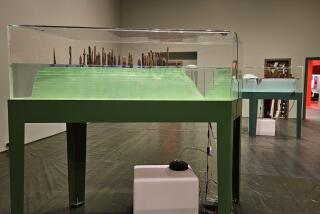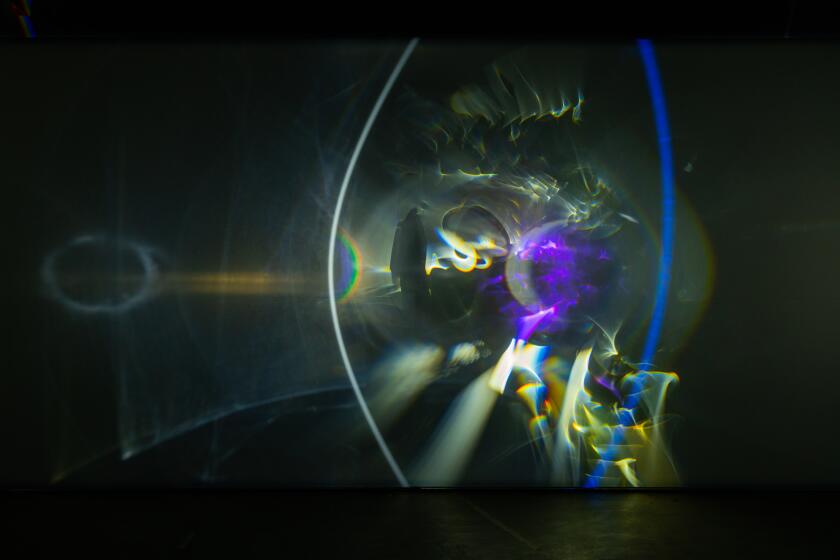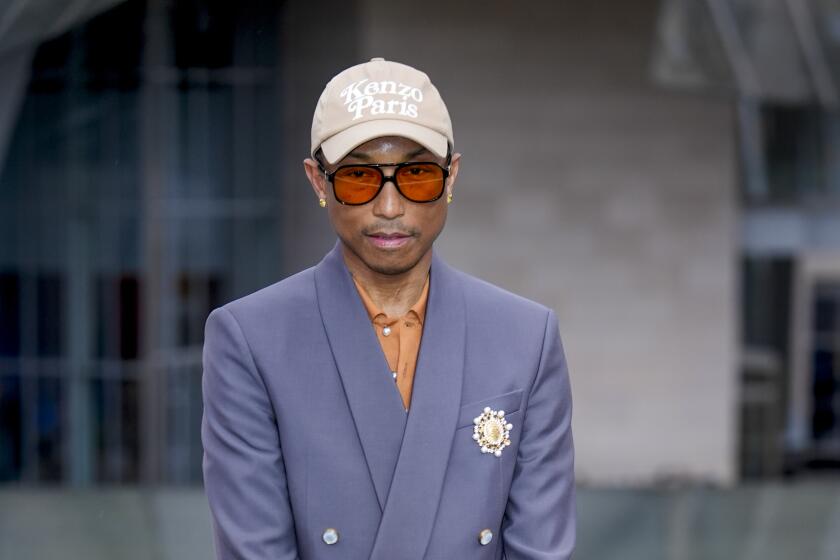L.A.’s Museum of Contemporary Art fires chief curator
The Museum of Contemporary Art has fired chief curator Paul Schimmel, a respected art world figure who was at odds with board members and director Jeffrey Deitch over the direction of the museum.
Schimmel, who headed the MOCA curatorial staff for 22 years, was let go Wednesday after a vote of the museum board. According to several sources, he was summoned to the office of billionaire art collector and philanthropist Eli Broad, MOCA’s top funder, and told of the board’s decision.
Although many people have known that Schimmel and Deitch barely spoke and disagreed over what course the museum should take, others still expressed surprise at Schimmel’s firing.
There also was dismay at the way the museum handled the high-level termination. It was first reported on a New York gallery blog, then picked up and disseminated widely on Twitter.
Hours later, MOCA issued a terse announcement: “Paul Schimmel is stepping down as MOCA’s chief curator. It’s amicable and there will be a release tomorrow.”
Board co-chairmen David Johnson and Maria Bell, as well as Deitch, declined to comment. Schimmel would not discuss the matter, referring a reporter to Johnson.
Schimmel and Deitch had competing visions for the museum. Although Schimmel is known for staging popular shows like a 2007 retrospective of the artist Takashi Murakami, he also developed serious, research-driven exhibitions that took on entire art movements.
Deitch was hired as MOCA’s director two years ago, shortly after the museum emerged from a financial crisis. His gallery Deitch Projects in New York City was known for exhibitions and special events that brought together visual art, the underground music scene and other facets of youth culture, which the MOCA board members who chose him hoped he could bring to the museum.
Among the shows he has organized at MOCA were the successful 2011 “Art in the Streets” exhibition, a show of artwork by the late actor Dennis Hopper, and unconventional exhibitions and events featuring actor James Franco.
John Baldessari, one of L.A.’s most esteemed artists and a MOCA board member, said he did not understand why Schimmel was dismissed and regretted not having been at the meeting at which trustees voted to fire him.
Baldessari said that “it seemed there was an uneasy relationship” between Deitch and Schimmel, but that nothing could justify firing the chief curator. “It would have to be pretty strong reasons, “ he said.
“What propels a good museum is the vision of the curators who are there, their long-term vision for the shows they might do,” Baldessari said, calling Schimmel “a major curator — the breadth and depth of the shows were always amazing, and very important in the art world.”
“I think this is a potential tipping point for MOCA,” Baldessari said. “First I want to know the reasons for him being fired and if they were sufficient to warrant him being fired.”
Veteran Los Angeles artist Joe Goode was outraged by the termination.
“He’s the heart and soul of that museum, and as of yesterday I think they completely destroyed that museum,” Goode said. “Paul Schimmel happened to be the most respected curator ever to come out of Los Angeles, with the exception of Walter Hopps, and to treat him with that kind of disrespect means they have no respect from me.”
Hugh Davies, longtime director of the Museum of Contemporary Art San Diego, said, “I don’t think any curator in the last 25 years has done more to elevate the contemporary art scene from a museum point of view than Paul Schimmel.”
Bolton Colburn, who led the Laguna Art Museum for 14 years, noted the “obvious” differences between Schimmel and Deitch.
“Everybody in the [art] community has been thinking, ‘How long can these guys co-exist in the same building?’ Colburn said. “It’s obvious that [Schimmel’s] style, his aesthetic tastes and his whole belief about contemporary art are different from Jeffrey’s.”
Schimmel joined MOCA in 1990 and quickly made his mark. His landmark 1992 show “Helter Skelter: L.A. Art in the ‘90s” helped put the work of artists like Mike Kelley, Paul McCarthy and Chris Burden — and a dark post-punk aesthetic — on the map. “Out of Actions” in 1998 covered three decades of performance art, in its links to painting, sculpture, dance and theater.
Most recently, his “Under the Big Black Sun,” exploring political art and pluralism among California artists from 1974 to 1981, was part of the Pacific Standard Time initiative. He also organized solo shows like “Robert Rauschenberg: Combines” in 2006 and the Murakami retrospective.
Broad is by far MOCA’s largest benefactor, having offered $30 million to bail out the museum after the discovery that it had spent down its endowment, which further eroded when the financial markets collapsed in 2008.
This week, MOCA also laid off senior education program manager Aandrea Stang, senior designer Nicholas Lowie, MOCA editor Erica Wrightson and three curatorial assistants. Studio One, the design agency founded by Shepard Fairey, has already begun handling much of the museum’s design work on exhibition-related material such as invitations and banners, though not publications.
Times art critic Christopher Knight contributed to this report.
ALSO:
LACMA cuts hours and employees
Rolling Stones hires Shepard Fairey for 50th-anniversary logo
Stolen atlas with first map of California is returned to Sweden
More to Read
The biggest entertainment stories
Get our big stories about Hollywood, film, television, music, arts, culture and more right in your inbox as soon as they publish.
You may occasionally receive promotional content from the Los Angeles Times.











